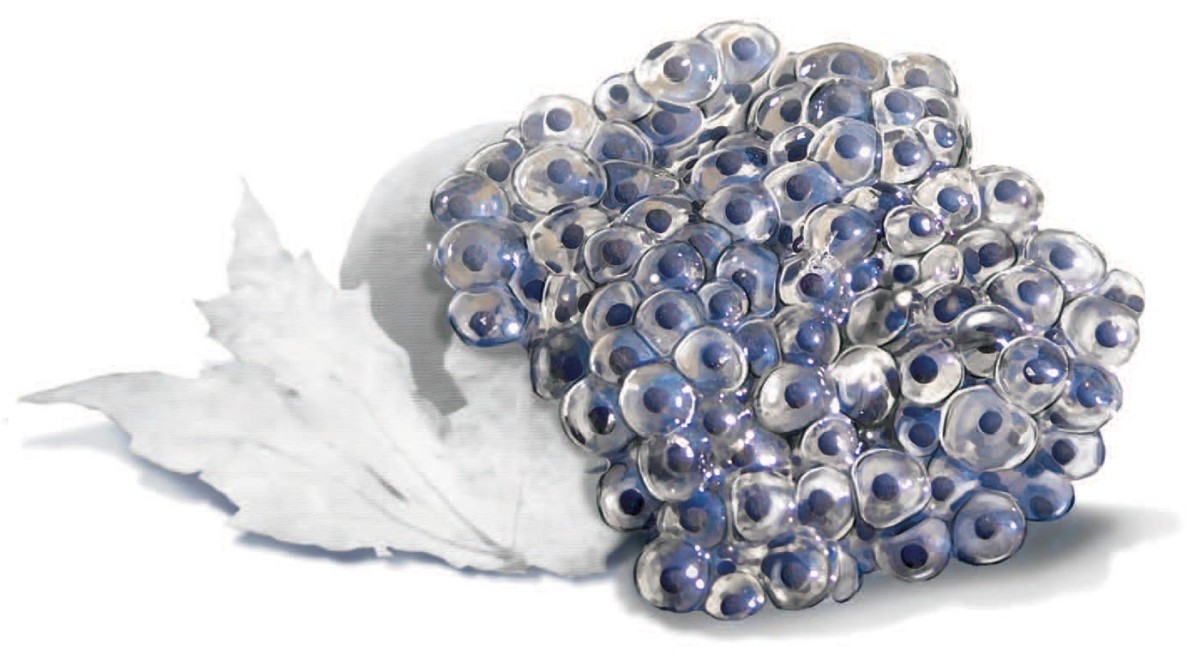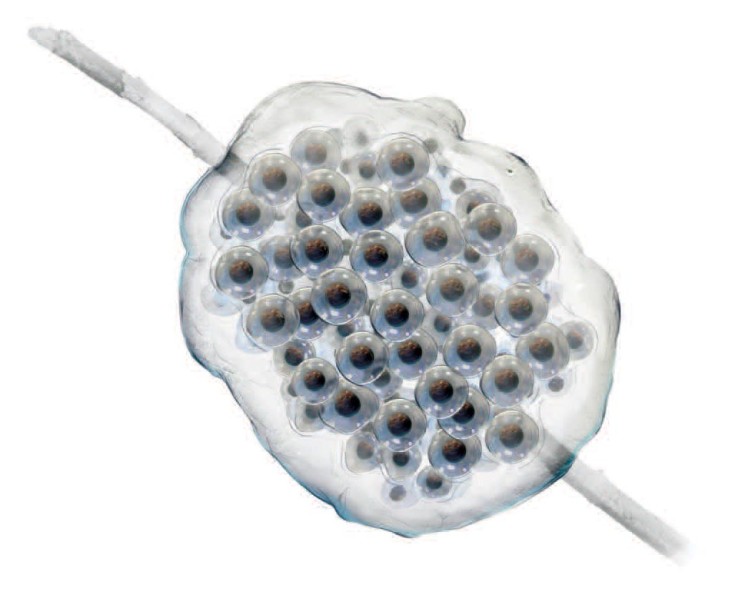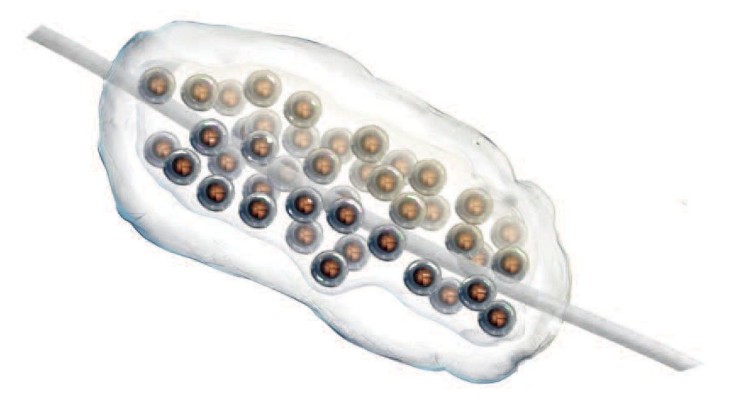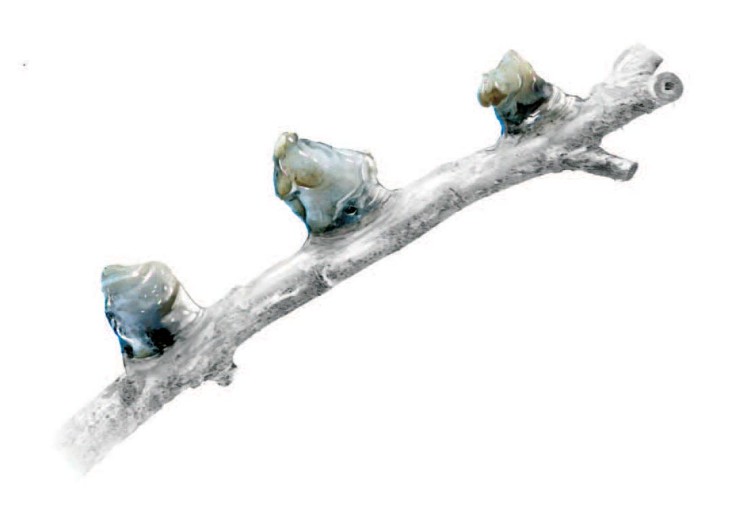
If you peer into the waters of a vernal pool in early spring, you may see the eggs of several amphibian species that use this special habitat to reproduce. But which eggs belong to which species? We asked artist Nicholas Bezio (Bezio Studio) and Steve Faccio, a conservation biologist with the Vermont Center for Ecostudies, to help sort them out.
WOOD FROGS lay single golf ball–size egg masses, which quickly swell to the size of softballs as they absorb water. Containing 800 to 1,000 eggs, each mass may be attached to submerged vegetation, or more often, deposited in a large communal raft containing dozens of egg masses. As with most other frog eggs, wood frog egg masses lack outer coverings of jelly, giving them a lumpy appearance.
SPOTTED SALAMANDERS lay one to three egg masses, each containing 10 to 250 eggs. These oblong-shaped egg masses are often attached to submerged sticks or vegetation and may be smaller than a tennis ball or as large as an eggplant. Spotted salamander eggs have outer coverings of jelly surrounding the entire egg mass. This jelly is thick and quite firm, and therefore easy to see. It provides protection from desiccation and predation.
A KEY FIELD MARK for distinguishing spotted and Jefferson salamander eggs is the location of the vitelline membrane, which prevents additional sperm from entering a fertilized egg. In Jefferson salamanders, the membrane is very close to the embryo, while in spotted salamanders it is much farther away. Note that the membrane begins to disintegrate as the embryo develops, making the field mark harder to discern one to two weeks after egg-laying.*
* This illustration was adapted from a line drawing in A Field Guide to the Animals of Vernal Pools, by Leo P. Kenney and Matthew R. Burne. This outstanding resource is available through the Massachusetts Division of Fisheries and Wildlife.
JEFFERSON SALAMANDERS lay one to four egg masses, each containing 10 to 40 eggs. The relatively small and slender egg masses have soft, clear outer jelly coatings that are difficult to see, making these eggs inconspicuous compared to spotted salamander eggs. They are usually tubular in shape and attached to submerged sticks or vegetation.
UNISEXUAL JEFFERSON/BLUE-SPOTTED COMPLEX SALAMANDERS are all-female descendants of an ancient hybridization event and have chromosomes from both species. They must use spermatophores of pure Jefferson or blue-spotted males to reproduce, but no male genes are incorporated into the eggs; each embryo is a clone of its mother. Unisexual egg masses can resemble either Jefferson or blue-spotted egg masses, but often include a higher number of eggs and have a relatively high proportion of dead or inviable eggs, which appear white as they are quickly colonized by a fungus.
BLUE-SPOTTED SALAMANDERS may deposit eggs singly or in loose sheets on the pool bottom or attach small clusters of 2 to 10 eggs to submerged vegetation or sticks. The eggs are surrounded by loose, “drippy,” transparent jelly, making them very difficult to see.
SALAMANDER SPERMATOPHORES are small capsules of jelly capped with packets of sperm. Males either scatter them across leaf litter on the pool bottom or attach them to submerged sticks. The presence of spermatophores, which may resemble small flecks of white paint, is an indicator that at least one of the three mole salamander species (spotted, Jefferson, or blue-spotted) is present.







